#Just obsessing over a obscure historical musical with a short run
Text
To the very few people who are in the gay egypt fandom, look what I found!!!!!!!!!
All posts • Instagram
It's a clip of stranger, specifically Iris being gay
#the cleopatra experience#sydney parra#Nya#Iris#Cleopatra#Stranger#Just obsessing over a obscure historical musical with a short run#I did maybe a bit too much digging online#borderline stalkerish amounts of digging#to the like 15 people in this fandom on tumblr#Gay egypt
1 note
·
View note
Text
Top 10 Niche Interests
Fixations? Obsessions? This is incredibly hard because I have wayyyy too many niche interests, so instead of stressing about it, I tried to channel the 10 things that immediately speak to me and maybe aren't so obvious from what I post here, like how much I'm obsessed with wigs, doll furniture, incredibly specific blogs, all forms of clothing with pockets, swimming pools, whimsical bus stops, over-the-top bathrooms, etc. etc Instead, I opted for some specifics that feel a little more evergreen and long tailed, like, so LIFE-long tailed that it's tough to nail down when or how they became part of the national psyche. I thank @alienfuckeronmain for the initial tag, and I'm tagging her AGAIN for round two because I know she has a billion additional niche things, and she'll post them, and I'll scream because it'll trigger five other things I neglected to post here, and I'll probably post my own round two, arggggh, insert aggressive sighing. Anyway, I tag ANYONE who wants to do it, just tag me so I can see!
1. Indoor Trees
I have no idea why this concept PULLS so hard because houseplants are kind of meh to me, but you want to plant an entire-ass TREE indoors, in the place where you live? Me, too, and I'd add a conversation pit plus a combo gold/red bathroom, among other things, and, bam, we're in my imaginary dream home, which I have literally, constantly ALWAYS mentally constructed from the time I was about six or so. (If you're curious, it has multiple themed rooms, and the closest I've seen to it recently is the outstanding Dita von Teese AD feature, but Amy Sedaris’s apartment comes close, too). There are two (2) 1960s houses in Long Beach with magnificent indoor trees, but I can't find them online, so have this modern interpretation and cry with me about how I can't visit the multi-story fake tree inside Clifton's Cafeteria for a good long while:

2. Conventions of Fans of Any Kind
One thing that I don't think I'll ever lose is how much I *love* people who are fans of SOMETHING, people who have a passion and create something about it or cosplay it or simply gather to celebrate it and connect to other people through it. The Internet provides in all kinds of ways, but I'm talking specifically about IRL conventions and the way my heart pitter pats when I first walk in those doors, SWOON! And it doesn’t matter how big the convention is or how random, I've been to smaller events like CatCon and the My Little Pony convention all the way up to biggies like WonderCon and Comic Con, and I have yet to be disappointed. I might know jack shit about what I'm walking into, but I want to see the merch, hear about the panels, and check out the people who are fucking PUMPED to be there. Sadly, I think it's gonna be a lonnnnng time until these come back, but I can live vicariously through my old photos, sigh:
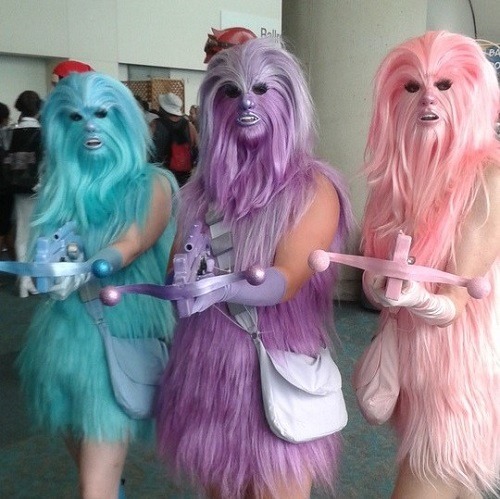
3. Dutch Wax Fabrics and African Fashion
I'm not the snazziest of dressers, but textiles, colors, and patterns have been an obsession that has soothed my visual soul for as long as I can literally remember. Wax fabric marries all three of those touchpoints, plus throws in a healthy dose of style, and I count myself lucky to have seen two big exhibits on the subject (this was one of them), oh, how I wish there were more! For sure, there's a fucked up underlying colonial/imperialist history here, but there's also humor and color and vibrancy, a reclamation of sorts, and multiple levels of fashion that take my breath away. I cannot do the different patterns justice at all, but the fan motif is one of my faves:

4. Hearst Castle vs. Madonna inn
These two fall into my #home tag because they're where I'm from, and they speak to me as equally sublime and ridiculous, camp and kitsch writ large and small, different (yet similar!) versions of Xanadu that two rich white men built as shrines to their own personal "taste." And the irony is that a lot of people shit on Alex Madonna for being tacky (the Madonna Inn is...uh, something else), yet praise WR Hearst for all the high-class art and architecture, most of which is fully lifted from desperate churches between and after world and yet they're both more or less the same concept (lodging for weary travelers, self-aggrandizement, questionable taste-mixing). Hearst Castle edges out slightly for me because it's bigger and has spectacular scenery and history, plus it gives me doses of LA noir thanks to the way Hearst killed a guy in a jealous Charlie Chaplin-related rage and Hedda Hopper covered it up, all kinds of old Hollywood shenanigans happened up there, etc. But I'm low-key an expert on both houses of the holy, I'm OBSESSED with both, and we can leave it at that. I mean, come on:

5. Snow Globes
I had to cull my personal collection slightly just to fit it all on the dedicated shelf in my bathroom, and I seriously need to refill all the water lines, but nothing beats a snow globe in terms of memorable souvenir, especially when you put it in a bathroom. The majesty!!! The jewel of my collection is the one from Sherwood Forest because WHY NOT celebrate a historic place and moment in the basic way?? He robbed from the rich to give to the poor, and the gift shop about 100 feet from the tree he hid in does the same! The circle of life! The irony of all the watermarks on this blessed image...protect:
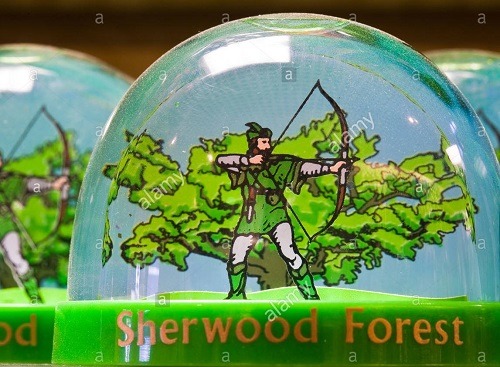
6. Highly Specific Museums
Look, we can all agree that the more venerated museums in the world are a form of garbage in terms of what they represent, what they've done, and who runs them, but I'm here for the museums that collect and celebrate things that tend to get overlooked. There are too many to list that I love that are still thriving, so I'm going to say goodbye to four recently departed faves. RIP to the Pez museum, I'm so glad I saw you and purchased your stale candy souvenirs. RIP to the museum of terrible food, you were a pop up when Phoenix and I saw you, and I will forever think about the worker describing people literally vomiting during their visits. RIP to the currywurst museum in Berlin, I've had currywurst exactly once and it was not for me, but I respect the Journey you took me on, including obscure east German TV shows that helped make you so popular (??). Finally, RIP to the velvet painting museum, there's no way to mince words, the person who owned you was crazy AS FUCK and had zero clue how to run a business, but I'm so glad I saw you multiple times and purchased my own velvet treasure (not this exact one, but remarkably similar):
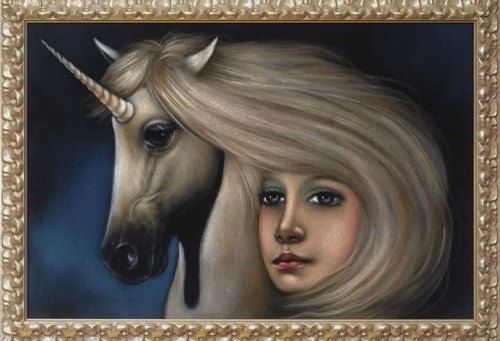
7. Liminal Spaces: Grocery Store Edition
Confession time for those who don't know me all that well, I'm a big time voyeur, and nothing fills my heart with joy like a walk at 7 or 8 pm, the witching hour when people haven't pulled the curtains, and I can scope out their decorations/furnishings without it being "weird." Another confession is how much I unabashedly adore grocery stores in other countries and will spend at least an hour wandering aisle by aisle, falling in love with how much everything is different yet completely the same:

8. Agatha Christie Novels:
As a child, I was a fairly compliant reader--I had to read something for school? Okay! For my mom? Sounds good! But the books that sparked the initial fire for me to read something purely for myself were second-hand (probably fourth- or fifth-hand, judging by cover art) Agatha Christie short story anthologies, which were the gateway drug to full Agatha Christie novels, then other mystery novels, and so on. But getting back to Agatha, I obviously loved all the stories, but every decade spawned incredibly good cover art (like, exceptionally good), and this particular artist's are right up near the top for me (I go back and forth on a lot of the '50s and '60s ones):
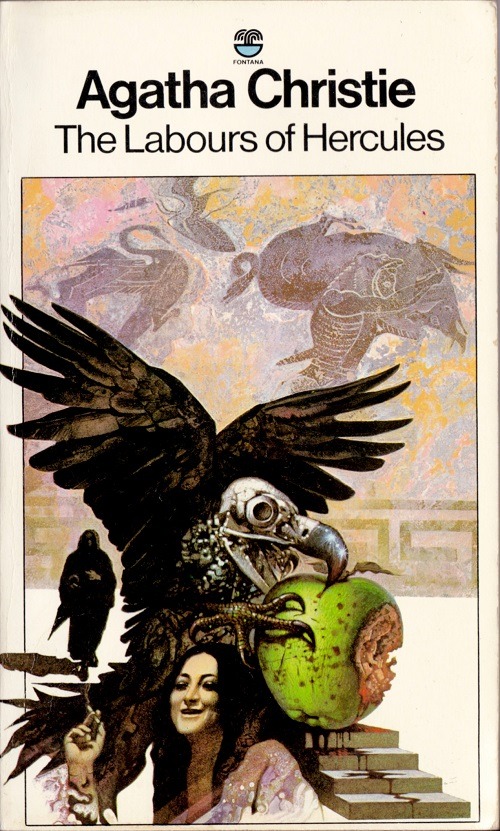
9. Scopitones
I link my obsession with scopitones both to my love of music videos in general and a shop in Austin, TX, that sold DVD compilations of them in particular, but either way, they're underappreciated and kitschy all in one! Francoise Hardy and the rest of the ye-ye's are my forever girls for this medium, but seemingly every country cranked them out, both actual set videos and "live" performances? If you don't know what they are, scopitones were machines that played music videos in French cafes in the '60s (??), so it was sort of your proto-MTV way to see your faves sing and dance. Oh, Francoise...so moderne!!

10. Cover Songs
I have so much patience and love for cover songs of any stripe, the more genre-bending and/or surprising, the better! My only minor beef is the trend in slooooooooowing down songs to make a point, but even those ones have a special place in my heart if they're effective. Live Lounge feeds my hunger the best, but my meta fave for representing this concept is Pulp's Bad Cover Version, which was already lyrically INSPIRED, a song about bad cover versions in terms of relationships, but then they did a video that was a visual "bad" cover version, with actors lip synching over an audio "bad" cover version, and all of it just worked? The cover for the single is someone in the band as a boy, making his own bad cover version of a Bowie album cover, it's meta meta meta, and I love love love, here's the video, if you're curious. In the more sublime cover category, I'm absolutely addicted to all of Orville Peck's covers, I truly hope he officially releases them sometime soon, but I wholeheartedly support any artist who does it:
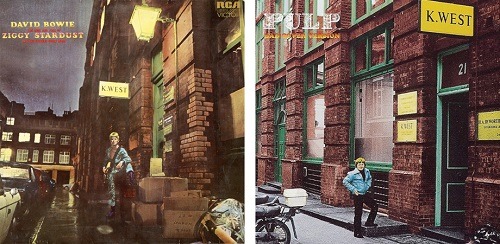
15 notes
·
View notes
Text
It Was The Night: 3
Author’s Note: i hope you all are enjoying this little story <3 i know its short and slow going but still! happy chanvember!
Pairing: Chanyeol x Reader (oc; female)
Genre: drama; historical au; suspense; romance
Rating (this chapter): PG
Word Count: 2,070
III.
For the rest of the month, very little occurred that would cause one to be suspect of anything untoward within the walls of the opera. The days began to blur into one endless stream of music, costumes, and rehearsals, each the same as the last. Having turned seventeen with almost no pomp and circumstance, and priding myself on a rather mature sense of pragmatism, I very nearly forgot the incident altogether.
The fault, in my mind, was in the trick of the light and the general uneasiness one falls victim to when walking alone in dark corridors. In this resolve, I was resolute, moving through the opera house without any sort of fear, wholly unplagued by the memory.
Even still, as the thoughts of shadows moved through my mind, I found it impossible to replicate their motions with the flames of my candles. When each bit of darkness is unique, each sway of light singular and fleeting, how then can one prove they had seen anything at all? I deemed this memory a fallacy of youth, the last bit of my childhood fading as I moved towards womanhood, letting it die as I did memories of my emotional turmoil throughout puberty.
This was, of course, until the day a rather mysterious, five act opera appeared on the seat reserved for our illustrious conductor.
Morning rehearsals had barely just commenced, each choral member still shaking away the full shapes of our yawns, when Monsieur Letrouc shouted in a rage at the mess. We all bristled, I especially, at the thought of a manuscript left unaccounted for, or, at the very least, left about and carelessly forgotten. Sheet music for an opera, we were taught, is akin to the bible, something holy and therefore sacred. Such a thing is a guide, all answers contained within its dictation, and to leave it so recklessly behind is a cardinal sin of theatrical production.
While we waited for its owner to stake claim, Monsieur Letrouc’s brow furrowed from anger and disdain, to confusion, a bewildered sort of expression making haste along his features. Glancing over its cover, and even at its thickness, we soon realized this was not, as we assumed, the music for Les Abencérages but instead something different, and unexpected, altogether.
Penned by man named Aeon Smith and based on the tragedy of Antigone, it was regarded with much skepticism and laughter throughout the corps for being ‘terribly presumptuous,’ and assumed to be ‘absolute drivel by a first time writer.’ No one had ever heard search a name, not even the international members within the orchestra who hailed from London. This was a man born of obscurity, and was audaciously presenting his work to the most renowned corps in the country. We called him ignorant, we called him foolish, but soon we all were forced to wear the blush of embarrassed prejudice in the wake of the music.
On a spot of daring wit, one of the chamber string players took a page from Haemon’s death, tearing it from the script with raucous glee, and stood in the center of the stage with a wicked grin. At once, he made every effort for the performance to toe precariously on the line of the absurd. Though, try as he might, it was simply impossible to render the exquisite brilliance of the piece anything apart from perfection. With just one page, the orchestra had become lost in a wave of emotion and we were rendered into silence. There wasn’t much deliberation after that, it was simply agreed upon that this would be our show and we were swiftly given new lines to learn.
It was assumed the music was delivered by a night messenger from an English writer, with such a name as Smith we could only assume this was the nature of its origins. Whispers from the choir girls alluded to a member of the kitchens having composed such delights, while the boys each boasted to having written it themselves once alone and separated from their friends, scratching the notes into parchment by candlelight. I believed neither of such accounts, and instead took to obsessing over the memory of my shadowed angel.
Looking back, I do not know why I titled him as such. Perhaps, it was his lack of an origin that persuaded me to call him so, though I daresay there was a sort of divine truth in the name. In the end, I think my essence called to him, named him as my own before I had ever set eyes upon his face.
In those early days, logic told me there was no such person, but then where else could an opera, with such an unusual writer as Aeon Smith, come into existence? I had the pieces but was completely without the ability to connect them. Conclusions were drawn from one to the next without any thought to their sheer impossibilities. The script was far too clean and precise to have been written by a child, the pages free from stray porridge stains. In my mind, the biggest clue was that the tale was far too romantic to spawn from the dreary, unfeeling heart of an Englishman. Eventually, I decided that its parentage was of little import to me and what mattered most was that it existed, and, therefore, required the length of our souls in its performance.
In a sense, I was devout to this opera, and, thus, devout to Aeon Smith.
Soon after rehearsals commenced, I began to experiment with the bending of rules and the thrill of teenage rebellion. On one particular evening, I snuck out of the bed chambers with Jacqueline, Charlotte, and a publicly mild mannered girl named Annessa. There was such excitement to be had from slipping beneath the watchful eye of Madame Catherine, the pull of adult whim tugging gently on our fingers. It was fleeting, these sensations, but we chased after the temptation of autonomy with bare feet and flushes at our cheeks. Our favourite private insurrection was, as one would assume, the performance hall.
As members of the chorus, none among our group very talented ballet dancers neither were we full members of the corps, we were regulated to the sides of the stage for the full run of an opera. At night, with only the dim glow of an oil lamp as our spotlight, we would stand in its center. With my eyes closed, I could imagine the adoring eyes of an audience, the weight of an aria burning at the rim of my diaphragm. This was where I was meant to sing my prayers, before red velvet chairs, beneath the glory of a crystal chandelier. The gold of the room always drew me in, wrapped tightly around my breath to keep me fixed in a permanent state of awe.
Annessa, never one to admire the beauty or importance of cherished spaces, took to the very center with an eagerness that bordered on aggression and began to sing, loudly, the aria of Antigona’s death.
It was the only role in the entire opera we could even attempt to sing, the character written for that of a soprano. As not all of us had yet completed the trials of puberty, we were still viewed as half-formed singers, the lower end of the musical scales still perilously out of our reach. Though Ismene had, in my opinion, far more challenging and bewitching arias written for her character, Antigona was the only option for our group to idly learn. Yet, Annessa sang with such boisterous enthusiasm I found myself scowling in the heart of my sanctuary.
‘That is not how it’s meant to be sung,’ I shouted, stopping her in the middle of the aria. At my sides, my fingers were tense, twitching in irritation at her seeming indifference to the character’s lament.
‘Sorry?’ she asked, bewildered. She rounded on me with a hiss through grit teeth. Yet, she did not intimidate me.
‘Antingona is about to die, she knows this fully,’ I explained gently. ‘She has disobeyed her uncle most egregiously, and has now been sentenced to be walled into a cave. At best, she would be reflective. Mostly, she would be sad, yet proud of her choices. She cremated her brother, defied the law, and loved with all her heart. So young and so in love with Haemon, mourning the future she will never have with him. And so, there is no happy ending. She sees Creon for who he really is, and absolutely cannot come to terms with the truth.’
I paused to bite my bottom lip and continued in a more resolved, severe tone, one I had never affixed to my voice.
‘There is no space for triumph here. I’ve never been one for grief, but I do understand mortality.’
It felt like a relief, saying it, letting her know that she had completely missed the point of the opera, the music, Aeon Smith himself. My thoughts and feelings had felt like a secret which was now being poorly kept, and I was grateful for the admission.
‘Well, if you’re so clever why don’t you sing it?’ Annessa challenged, finally, the sneer in her voice not going unnoticed by me, and likely the others.
I shall never know what sort of bravery possessed me the moment I accepted her demand, and only looking back now I can almost point towards the exhaustion of restraining my sudden, teenage competitive nature. In the end, I believe wanted this moment, wanted the pride, wanted the sin of it all - wanted, more than anything, to let the Godless city into my veins for once and for all. I took to the center of the stage with delight pulling at my shoulders, lifting my posture and with memories of a boasting Father Ezekiel lingering like phantoms in the back of the theatre.
And so I sang, with full voice and relaxed palms, jaw loosely set and diaphragm open. The words came easily, memorized through repetition in rehearsals and their natural cadences. As I sang, every act on stage became tangible. Soaked into my hands was the blood of my slain brother; before me, my young groom, with dagger in hand, visible only through a fissure of stones. My heart ached with closeted familial betrayal, and my tongue burned with the words I wanted to shout, at France and at God:
Do not believe that you alone can be right.
The man who thinks that,
The man who maintains that only he has the power
To reason correctly, the gift to speak, to soul––
A man like that, when you know him, turns out empty.
I kept singing, wishing I could cry for all my losses and all my future gains, the vitriol pouring out of me in a deluge, much akin to flood.
You’ll never see me taken in by anything vile.
And then, with wide eyes, I saw the shadow looming in the dark at the top of the third level balcony. I remembered my ghost, my shadow in the mirror, and suddenly felt a surge of elation. Here now was proof and not just for my own eyes!
Immediately I stopped singing turning back to my friends, gesticulating vigorously into the dark, just beyond the glow of the oil lamps.
‘Look, in the balcony! The opera ghost!’
They all ran to me, squinting in the direction of my finger and I smirked, fully prepared to clarify the proof of childish, erroneous tales. But when I looked back, there remained only the night, with no welcome shadow to put conviction to my name. My friends laughed the entire way back to our quarters, laughed at my eagerness, my foolishness, my sudden, unpredicted turn towards belief. I’d never once scorned a shadow but, on that evening, I wanted the dark to wither beneath my feet.
The following morning there was a folded piece of parchment, sealed in blood red wax, placed directly in the center of the recital hall. As our conductor opened it, his brow grew over more into a concerned furrow and his eyes, upon completion of his read, bore into mine with tremendous distaste.
He read aloud:
‘By order of Aeon Smith, Y/F/N Y/L/N is to play the role of Antigona. There shall be no exceptions.’
#chanyeol x reader#chanyeol fanfic#kpoptrashtag#kwriterskollection#noonanet#chanyeol au#chanyeol scenario#chanyeol fanfiction#exo au#exo scenario#exo fanfic#exo fanfiction#kpop fanfic#park chanyeol
46 notes
·
View notes
Text
Weekend Briefs - 17 July 2020
Hey Everyone!
I can imagine the relief and happiness when a lot of my colleagues type “ Weekend is Here” followed by emoticons of dancing men and women on our WhatsApp conversations. I experience the same joy when I write a new edition of the Weekend Briefs, and the weekend only begins when the publish button is clicked.
Anyways, the week as usual has been filled with unexpected surprises and the bare mention of paper sizes below A4 can tip off my colleagues. Amidst all the chaos & confusion , novelty filled playlists, light yet touching words of encouragement, the afternoon rains , and good food has helped me muddle through the weekend. Without much adieu, lets move onto our reading lists for the weekend...

Image courtesy : Johan Papin
King without a Kingdom in a new republic
I have been reading a near personal and heroic narrative of V P Menon , the sidekick to the great Sardar Vallabhai Patel, who was a tough negotiator and got all the princely states to agree to accede to India. However, many of these princely kingdoms were annexed by the British and plundered to be mere sources of income for the British Raj and the departure of the British could have signaled a reign of autonomous rule for these kingdoms but those plans were foiled by the Patel-Menon duo resulting in an India we see today. Interestingly, one such kingdom was the Kingdom of Oudh in Lucknow, which was annexed by the British but had much regal splendor and fame in the United Provinces back in the day. Now, imagine a royal descendant turns up at gates of the Government of India and announces all the royalties and titles taken away from them to be restored to them. NYT’s Ellen Barry captures an interesting tale of an eccentric family of desposed royals who lived in near isolation and obscurity in Delhi’s Malcha Mahal. The family still believed they were royals in every sense of the term and how equally tragic their life was. Read this extremely engaging and informative piece about a family and a king without a kingdom. To be honest, this was one of the finest pieces I have read in recent times. You can read this here.

Image courtesy : NYT
WE CONQUERED THE MECCA OF CRICKET!
For the Indian cricket fan, nostalgia of a bygone era involves some fine moments in the history of the game. Sharjah 1999, Eden Gardens 2001, Lords 2003, Multan 2004 and many more. Here was a new team with a nice mix of young and experienced, under the agile captaincy of Sourav Ganguly, shrugging off the blemishes of a match fixing and corruption scandal and playing directly to the hearts and minds of a billion people. All of the above mentioned moments are uniquely special but if there is an image to show India had truly arrived at the cricket scene, it is the image of a defiant Ganguly swirling his jersey on the balcony of the Lord’s Cricket stadium. 18 years have passed since that memorable evening at Lords, and Indian cricket has changed way beyond recognition. Indian Express takes a walk down the memory lane with Mohammed Kaif, who was the unsung hero of the run chase. You can read his interview and listen to him recollect those fond memories here.
P.S If you wish to revisit the Lord’s victory ( what ECB even calls as ‘One of the Greatest ODI Matches ever’ ) you can watch it here.
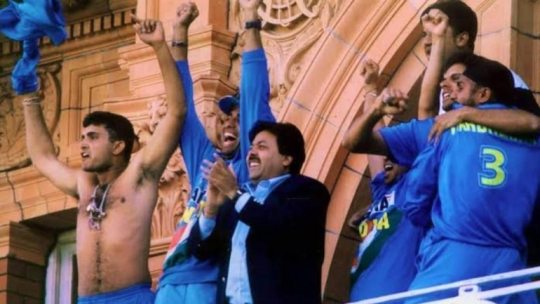
Image Courtesy : India Today
In a world for/of men, the woman stands out !
The world is now opening up to the revelation, how the world is designed by and for to be used by men. Look around at every single utility ever designed. The dimensions of a cell phone are designed so it fits into the palm of a man, desks are made believing the end user is always a man. In several silent ways, these daily inequities play out against women even though proven research says women do much more unpaid work than men and have to muddle through to a career while rearing children, making a home and many other chores. This week NYT’s Program launches a unique column titled, “ In Her Words ; 7 Days, 7 Issues “ highlighting the many inequities women face in 7 beautifully illustrated and concisely written articles. What struck the most with me was the following few lines from the first issue written by Emma Goldberg.
“Researchers at Boston University and Microsoft found that a software program trained on text from Google News was also more likely to link women with domestic activities. When asked to complete the statement “Man is to computer programmer as woman is to X,” the program responded: “homemaker.”
You can read the entire series here.
Enough of the readings... Tell us something to watch
Taking a cue from the above, imagine if a movie spoke to you about gender abuse, fused it with a few supernatural occurring and set in the pre-independece era India. Bulbbul ( Streaming currently on Netflix ) does this concoction of themes quite poignantly. Directed by Anvita Dutt Guptan, produced by Anushka Sharma, Bulbbul boasts of an ensemble cast of Tripti Dimri, Rahul Bose, Paoli Dam who give riveting performance to make this an engaging watch. With just over 95 minutes and soaked in a visual palette of crimson, Bulbbul is a quick and promising watch. Several scenes are beautifully composed and the soundscape of the movie captures the elegant yet scary forests where the movie is set in. Watch it for the brilliant performances of Rahul Bose and Tripti Damri.
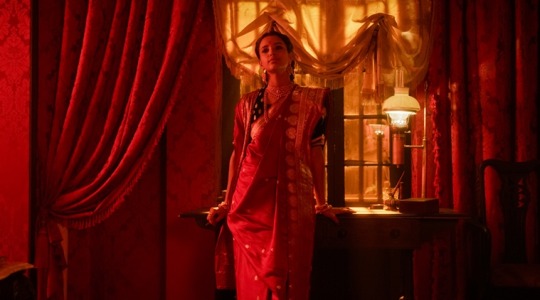
Source : Netflix India
WFH WFH WFH by Apple
Ever since the Weekend Briefs began, there is a healthy obsession over the most trendy word of the year WFH ( Work from Home ). Apple captures the drama and many nuances of the Underdogs working from home and how WFH is transforming our lives in this era. This 6-minute mini, is enjoyable, effable and an elaborate Apple product placement video. Good marketing and the increasing human connection to its products has always been a forte of the chaps at Cupertino. You can watch this short here.

Image Courtesy : YouTube
Tell us something to listen to...
History of India podcast by Kit Patrick is a light, educational podcast chronicling the many historicities of India from 6th century BCE. This extremely grounded podcast by Kit focuses on why Indian history plays a pivotal role in understanding how the history of the world. You can catch Kit’s podcast on major podcast streams and read the exclusive review by first post here.
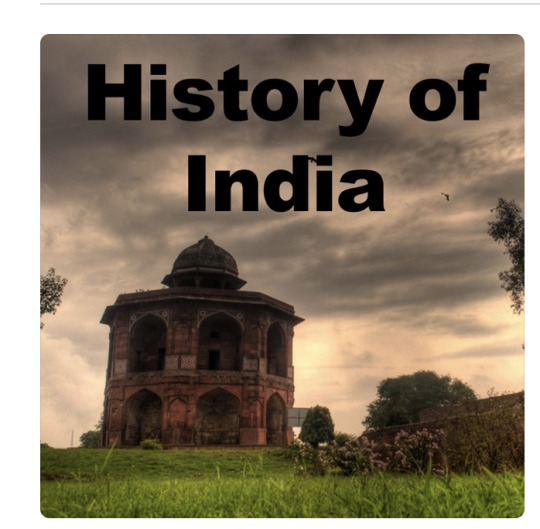
Meanwhile, we have been listening to this incredible playlist called Groove on Apple Music. Filled with deep, techno tracks , this is a finely curated playlist from Apple Dance Music can help you get into the ‘groove’ when doing mindless tasks such as figuring out on scaling a powerpoint to newer ratios or V-looking up an excel spreadsheet. You can catch the playlist here.
_____
Well that’s all from the Weekend Briefs for this weekend. I am off to begin my weekend, by cooking dinner!
If you would like to feature/suggest for the upcoming editions for Weekend Briefs, please ping us on our Instagram page.
We would like to thank Umesh S for his podcast recommendations this week.
Hope you all have the best weekend of fun and frolic.
Happy Weekend!
Signing off,
The Weekend Briefs.
0 notes
Text
Final Exam
Question #2 Gone but Not Forgotten
The Beastie Boys and MCA Forever
Since High School, the Beastie Boys has been one of my favorite rap groups.
When I was in high school, my musical taste began to stray away from the pop hits the short playlist of chart toppers that streamed all day on 96.7 Kiss FM (the pop radio station in Austin) and I started to explore more obscure, indie music that my friends liked and older music. Both of my parents, my dad especially, have always been old school hip hop fans. When I finally joined Instagram (my dad was on it before I was), he would tag me in or DM me photos of artists who I should check out, like Mos Def, LL Cool J, and Run-DMC. At first, I resisted. But eventually I gave it a try. Run-DMC was the first group I got into, and I really liked the simple beat of the music and their cool style (I am actually wearing the Superstar adidas that I bought in high school). But eventually, because of their collaboration with the group in the mid-‘80s, I eventually ran into the Beastie Boys, one of my favorite groups to this day.
I have gone through a series of phases of obsession with certain artists throughout my lifetime in which I watch all of the artists’ music videos, listen to each of their albums in order, and buy various t-shirts of the artist, and I definitely had a Beastie Boys phase. I liked that the group, Michael “Mike D” Diamond, Adam “Ad-Rock” Horovitz, and the late Adam “MCA” Yauch, did not take things to seriously, their music was fun, if sometimes problematic. I liked their IDGAF attitude, that was very much the opposite of my self-conscious self in high school. And I liked that their music dipped into the genre-bending and experimental realm. Since the group started out as a rock band, each album usually had a rock song or at least one that combined rock and rap, like the anthem “No Sleep Till Brooklyn” on their first album “Liscensed to Ill.” And “Paul’s Boutique,” although it sounds like a conglomeration of sounds with its various samples, seamlessly blends one song into the next, and I have to listen to it in order every time. I was not yet a Beastie Boys fan when Yauch died in 2012, but the first summer that I spent in New York City for an extended period of time, visiting Adam Yauch Park in Brooklyn Heights was on my to-do list.
_____________________________________________________________________ Question 3 The Significance of Wesley Morris’ “The Last Taboo”
Morris combines historical context and personal essay to critique the 2016 film “Moonlight.”
“The Last Taboo” by Wesley Morris, published in the New York Times, is a piece of criticism that made me think about the role of the critic and offered a new perspective on what a piece of criticism should look like. In this critique, Morris uses the black penis as a motif to explain the ways in which the depiction of black male sexuality in film has changed over time, how it affected him as a gay, black man, and how we eventually got to see a film like Barry Jenkins’ Academy Awarad winning film, “Moonlight.”
The main thing that makes Morris’ critique effective is his use of context. Before getting into the history of the depiction of black male sexuality in films, he begins the piece by discussing more modern depictions of or representations of male sexuality in modern films and television shows, like “Ted 2” and the HBO series “The Night Of,” comparing and contrasting the way that these shows and films depict the sexualities of black men versus white men. Then he goes into the introduction of and racist history of black men in mainstream film and TV in “Birth of a Nation” and he goes into explaining the significance of Blaxploitation films. So before Morris gets into the main work that he critiques, the reader has a clear idea of where he is coming from, why what he is talking about is important, and because one of the main points of his critique is explaining how we got to seeing a film like “Moonlight,” he shows the reader exactly how by laying going through all of the context.
Towards the end of the essay, Morris talks about “Moonlight” and the importance of Jenkins’ nuanced depiction of, the main character of the film, Chiron’s sexuality in the movie. And then at the very end of the critique, Morris gets into the personal piece of the essay and provides a personal anecdote that sums up how the depiction of black male sexuality affected him growing up and why “Moonlight” and this topic matter to him. Morris’ piece made me reevaluate the role of the critic and the importance of the critic’s point of view. Not only is the critic able to display their response to and opinions on a piece of art, but why the piece of art matters to them specifically and most importantly, why they are writing about it.
_____________________________________________________________________ Fun (but serious!) 1: Thundercat’s “Walkin’” is a Futuristic Bop
“Walkin’” from Thundercat’s 2011 album, “The Golden Age of Apocalypse” has an old school beat with more futuristic sounding instruments thrown on top of it with upbeat lyrics sung by Thundercat himself, Stephen Lee Bruner.
The song begins with the drum beat and then, a guitar with what sounds like effects pedals begins and Bruner sings, “When it’s just you and me, there’s no place I’d rather be.” And the repetitive lyrics throughout sound like a love song that a 1960s boy band like the Beatles sang at the time. The song, only about two minutes long, is short and sweet, like a walk down the block with a friend on a nice day.
The song’s music video was produced as seemingly simply as the song itself. It looks as if Bruner and some friends stepped outside their front door with a digital camera on a sunny day, took some footage, and put it together with Windows Movie Maker. In it, Bruner walks down a suburban sidewalk with a girl, both in matching glasses and t-shirts as some weird things go on around them, a zombie offers them snacks, and a guy in a wizard beard blows bubbles with faces in them. The greatest Blockbuster effect of the video occurs at the end, when a friend shoots lasers out of his eyes, blows up another guy’s head, and then Bruner and his laser-eyed friend go for a high five which ends in an explosion.
_____________________________________________________________________
Fun (but serious!) 2: Arts, Culture, and Fashion Criticism
What sticks out to me on the worksheet and its summation of my interests now and in the past, is how much my interests growing up affected me as a writer/critic. In my personal essay on “Mean Girls,” I think I wrote that in high school, my friends and I were pretentious and purposefully listened to music, watched movies and TV shows, and liked things that went against the norm of what everyone else at school liked. I also remember that we used to discuss the arts and culture that we consumed as if we were critics as well (i.e. why we thought the Arctic Monkeys were a better group than One Direction.) So I didn’t realize it at the time, but now I have realized that I was beginning to form opinions on and think about the music I liked in a critical way, even though I thought sometimes that perhaps we were a bit too opinionated.
youtube
youtube
youtube
0 notes
Text
'Generation Wealth' Is A Wild Peek Into The 1 Percent, Where Women Just Can't Win
New Post has been published on https://latestnews2018.com/generation-wealth-is-a-wild-peek-into-the-1-percent-where-women-just-cant-win/
'Generation Wealth' Is A Wild Peek Into The 1 Percent, Where Women Just Can't Win
One of the most prophetic photos in Lauren Greenfield’s 25-year-long documentary project, “Generation Wealth,” shows a 12-year-old Kim Kardashian hanging out with friends at a school dance in the early 1990s.
Dressed casually in overalls and a white T-shirt, Kardashian is more than a few reality TV spinoffs away away from the glam icon she’s become. Yet her lips are touched with rouge, hinting at a budding fancy for self-enhancement. And while her classmates ignore the camera in their midst, Kardashian perks up at the sight of it, gazing into the lens with curiosity and slight amazement.
It’s an eerie premonition of what’s to come, the Kardashian-ization of our cultural consciousness. Back in the ’90s, Kim K. was another privileged kid at a Los Angeles middle school populated by celebrity offspring. But fast forward a couple decades and “[k]eeping up with the Joneses literally became keeping up with the Kardashians,” Greenfield often repeats in interviews about her project.
Greenfield, the filmmaker behind “The Queen of Versailles,” has spent two and a half decades obsessively filming, photographing and interviewing hundreds of subjects like pre-E! Kardashian, whose lives have been in some way warped by capitalism’s scourge ― from hedge fund managers to child beauty queens, aspiring rappers to trust fund teenagers.
The anthropological study took the form of a photography exhibition last year, a disorienting glimpse into the lives of the 1 percent, as well as with those who crumble in their desperate attempt to reach the upper echelons. Now, it’s headed to the big screen as a documentary distributed by Amazon.
Overall, the documentary ― like the photo project that preceded it ― critiques what it perceives to be our new, debased American dream and everything that comes along with it: greed, vanity, unchecked ambition, an obsession with surfaces. All no good, very bad consequences of corporate capitalism.
Kardashian reappears in the film, framed as the embodiment of societal ills all grown up. Clips of her sex tape play as Courtney Roskop, a former adult film actress, says, “I always say Kim is my inspiration.”
Greenfield posits Kardashian as the ultimate incarnation of our fame-hungry culture and its all-consuming desire to get more by doing less. Her reality TV empire played a critical role in obscuring the line between fiction and reality. Most damningly, Greenfield suggests, she’s transformed her body into a commodity, embraced sexuality as a form of currency, and inspired other women to do so, too.
And therein lies the problem with Greenfield’s doc.
Whereas the project’s still photos depict their subjects ― flawed and outrageous as they may be ― with empathy and detached fascination, as if her camera can’t help but be somewhat seduced by the shiny horrors it aims to criticize, the film lacks this same nuance. Instead, it beats viewers over the head with overwrought narration, a cheesy soundtrack and a moralizing tone ― one that’s particularly deaf in its treatment of women, who, in an effort to climb the ladder to success, historically start more than a few rungs down from their male counterparts.
In the process of condemning the commodification of women’s bodies, “Generation Wealth” demonizes sexuality as a means of appealing to the men who profit most from the system anyway. And it fails to acknowledge sexual expression as anything but an unfortunate side effect of patriarchal capitalist culture’s blight. By embracing eroticism as a form of capital, Greenfield winds up alternately walloping and pitying the women who yearn for it and exude it. At times, her critiques of their lifestyle veer off the topic of wealth all together.
In the end, Greenfield’s cinematic portrait paints the Donald Trumps and Stormy Danielses of the world with the same broad brush.
Lauren Greenfield courtesy of Amazon Studios
For example, Greenfield invites “Generation Wealth” viewers into an upscale workout class, dubbed cardio striptease, where a room full of women spin around poles and dance suggestively as a teacher cheers them on.
“Let’s roll over and crawl and act like we like it,” the teacher says, as women move sensually on all fours. The smiles and laughter, however, suggest they genuinely do enjoy exploring their sexuality in such an open, though perhaps absurd, safe space. Greenfield interprets the scene differently. Even women who don’t financially benefit from their sexuality, she seems to argue, manage to exploit themselves. This is the capitalistic hellscape we occupy.
Cut to Magic City, a strip club in Atlanta, Georgia, where a combination of narration and hedonistic imagery cue the intended lesson. “At Magic City, beautiful girls use their sexual capital to rise to the top,” Greenfield proclaims, as images of naked black women dancing amid flurries of cash play on-screen.
“When I first started dancing, I felt like I made it,” Diamond, a stripper at Magic City, tells Greenfield. Her words play over footage of women on their hands and knees, gathering wads of money from the floor. “Being average has never been an option for me.” The intended juxtaposition ― Diamond’s words versus the reality Greenfield sees ― is cringeworthy.
Greenfield places the onus of responsibility not on the men treating women like objects (“I’m throwing money on a person, and she likes it!” a DJ who also works at the club says into the camera) but on the women who take pride in their work and their bodies for being blind to their supposed exploitation. Diamond doesn’t seem to possess the outrageously deep pockets of some of Greenfield’s other subjects, nor has she indicated in any way that stripping has negatively impacted her life. And yet Greenfield frames her as an unfortunate casualty in capitalism’s wake, conforming to the patriarchal underpinnings of the patrons and employers who might objectify her.
Lauren Greenfield, courtesy of Amazon Studios
Adam, 13, and a go-go dancer hired to entertain at a bar mitzvah party at the Whisky a Go Go nightclub in West Hollywood, 1992.
But one need not venture into a strip club to witness women exploiting themselves, Greenfield argues. All you need is an internet connection. Although social media didn’t exist when her project began in the early ’90s, Greenfield suggests that it provides the perfect platform for women to Kardashian-ify themselves now.
Take it from Greenfield’s 15-year-old son Noah, who conducted an “Instagram study” on the subject, the findings of which wound their way into his mom’s doc. “I feel like a lot of my friends are in very revealing bikinis to make sure they get a lot of likes,” he says against a backdrop of Instagram photos of underage girls in bathing suits, their faces blacked out.
“Guys want what’s really demeaning to women,” Noah continues, as an nude selfie of Kim K. hits the screen. “To match guys’ expectations, I think lot of women try to replicate it.” A 15-year-old boy’s dogged conviction that scantily clad women are debasing themselves for men’s enjoyment is taken as fact, thereby amplifying the film’s overarching message that women are incapable of subverting the capitalist trappings thrust upon them.
Noah then discusses which Instagram posts don’t get as many likes: namely, in his experience, those which depict family. A cute family photo of the Greenfields flashes on screen.
Family, the film emphasizes, is the way out of our current consumer dystopia, and childbearing an antidote to women’s perpetual self-degradation. Most every hopeful moment in “Generation Wealth” revolves around family, and in particular, motherhood.
Suzanne, a workaholic who spent unseemly amounts of money on her personal appearance, describes feeling changed “so dramatically” by the birth of her daughter, whom she describes as “the prize.”
When she muses on her shifting spending habits, from contemporary art for herself to ballet classes for her daughter, the film’s happy Disney background music communicates a positive change has occurred. Never mind the fact that her spending seems just as exorbitant.
Lauren Greenfield courtesy of Amazon Studios
Mijanou, 18, who was voted Best Physique at Beverly Hills High School, at Senior Beach Day, Santa Monica, California, 1993.
The sentiment continues as Greenfield revisits a woman named Mijanou, whom she initially met in 1994 as a high schooler in Los Angeles, when she was awarded “best body” of her graduating class.
As an adult, Mijanou is just as beautiful, though her style is more bohemian earth mother now. In the film, she runs with her daughter Sahaya through an idyllic field, conveniently located in the backyard of a mansion that she is probably not trespassing on, as she praises the benefits of “conscious parenting” and a TV-less lifestyle.
“I feel protective over her. She’s so beautiful,” Mijanou says of her daughter, before recalling the more painful memories of her own adolescence. “I think about that time, and how even I used to dress, and I’m now like, oh my God, I would never want Sahaya to go out like that.”
She’s framed as having escaped consumerism’s devilish grips, primarily by covering up and giving birth.
Overall, the documentary provides a wild glimpse into the highest ranks of wealth. And it admits that, under capitalism, women get the short end of the stick. However, by framing family as the ultimate panacea to the damage consumerism inflicts, and caricaturing the women whose priorities remain elsewhere, Greenfield muddles her point.
She fails to consider that child-rearing isn’t an antidote to income inequality, but in fact, a sure way to perpetuate it.
!function(f,b,e,v,n,t,s)if(f.fbq)return;n=f.fbq=function()n.callMethod?
n.callMethod.apply(n,arguments):n.queue.push(arguments);if(!f._fbq)f._fbq=n;
n.push=n;n.loaded=!0;n.version=’2.0′;n.queue=[];t=b.createElement(e);t.async=!0;
t.src=v;s=b.getElementsByTagName(e)[0];
s.parentNode.insertBefore(t,s)(window,document,’script’,’https://connect.facebook.net/en_US/fbevents.js’);
fbq(‘init’, ‘1621685564716533’); // Edition specific
fbq(‘init’, ‘1043018625788392’); // Partner Studio
fbq(‘track’, “PageView”);
fbq(‘track’, ‘ViewContent’, “content_name”:”‘Generation Wealth’ Is A Wild Peek Into The 1 Percent, Where Women Just Can’t Win”,”content_category”:”us.hpmgarts” );
fbq(‘trackCustom’, ‘EntryPage’, “section_name”:”Culture & Arts”,”tags”:[“@health_gad”,”@health_pain”,”@health_depression”,”@health_adhd”,”@health_models”,”@health_hiv”,”@health_erectile”,”@health_ibs”,”kim-kardashian”,”income-inequality”,”wealth”,”documentary-film”,”lauren-greenfield”],”team”:”us_enterprise_culture”,”ncid”:null,”environment”:”desktop”,”render_type”:”web” );
waitForGlobal(function()
return HP.modules.Tracky;
, function()
/* TODO do we still want this?
$(‘body’).on(‘click’, function(event)
HP.modules.Tracky.reportClick(event, function(data)
fbq(‘trackCustom’, “Click”, data);
);
);
*/
);
0 notes